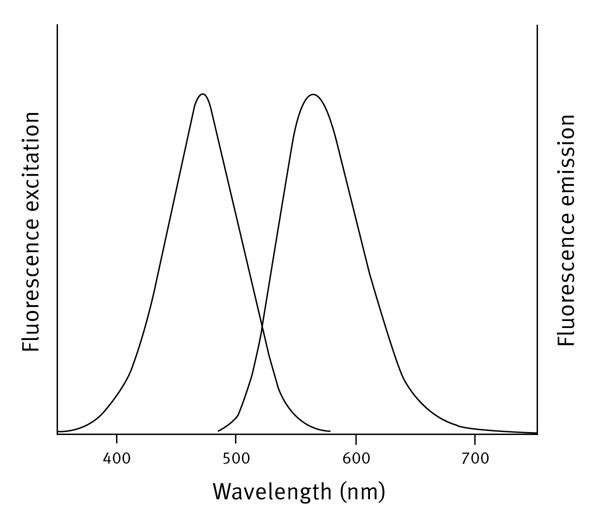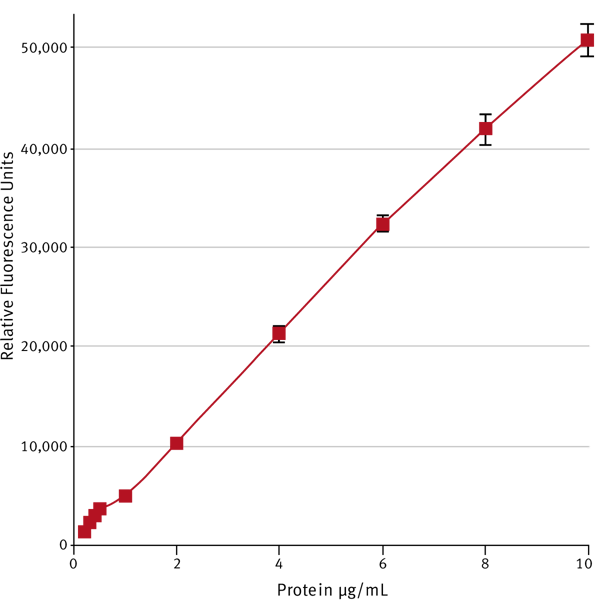Introduction
The field of proteomics has expanded dramatically in recent years with research on a whole host of organisms. Techniques such as two dimensional difference gel electrophoresis (2D DIGE) require the accurate quantitation of protein, as up to three labelled samples can be loaded on a single gel for comparison.
Assay methods for determining protein quantitation include absorbance at 280 nm, the Bradford assay, Lowry assay, BCA method and more sensitive assays such as Fluoroprofile® (Sigma-Aldrich) and NanoOrange® (Molecular Probes®).
The measurement of solution absorbance at 280 nm (A280) has problems with variability between samples and interference from nucleic acids and other contaminants. Detergents and reducing agents can cause problems with the other assays mentioned above – these agents are present in samples for 2D gel electrophoresis.
Fluorescent methods are more sensitive for quantitating proteins than absorbance methods. The NanoOrange® protein quantitation assay from Molecular Probes® is a highly sensitive assay with the useful range being between 100 ng/mL and 10 μg/mL for fluorescence based microplate readers. The spectrum of the NanoOrange® reagent is given in Figure 1.
Materials & Methods
The following materials were supplied by the manufacturers as detailed:
- NanoOrange® Protein Quantitation Kit
- MJ Research PTC200 Peltier Thermal Cycler
- BMG LABTECH microplate reader
- Microplates, black 96 well (Greiner Bio-One)
- General laboratory consumables included pipette tips and microcentrifuge tubes
Reagents:
- NanoOrange® Protein Quantitation reagent A
- NanoOrange® Protein Quantitation diluent B
- Bovine Serum Albumin (BSA) Standard (2 mg/mL)
| Excitation filter: | 485-12 |
| Emission filter: | 570-10 |
| Gain: | plate assessed, well with the highest intensity selected |
| Number of cycles: | 1 |
| Number of flashes per well: | 10 |
The data was evaluated using the BMG LABTECH MARS data analysis software. The average value of the blank measurement was subtracted from the measurements and the standard curve was plotted.
Results & Discussion
A four parameter fit was performed on the data which yielded a very high R-value of 0.9998. (Figure 2).
The small concentration range was also measured separately with optimized gain on the highest protein concentration (Figure 3).
A linear relationship between protein concentration and fluorescence units is obtained indicating that small concentrations of protein in samples can be determined using the BMG LABTECH microplate reader.
Conclusion
The NanoOrange® Protein Quantitation Kit can be easily adapted for use with a fluorescent microplate reader such as BMG LABTECH´s and used in a high throughput manner.
The instrument allows measurement of endpoint or slow and high kinetics at a user-defined temperature and can be easily equipped with injectors.
Nano Orange is a registered trademark of ThermoFisher Scientific




